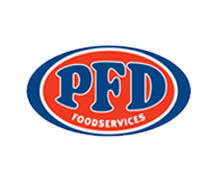Decision Tree Learning
Decision tree learning: Decision tree learning is a method of machine learning that creates a model of decisions based on data.
Decision tree learning is a supervised machine learning technique used to create models that can predict outcomes from data. It works by breaking down the data into small chunks and creating a decision tree out of them, which can be used to make predictions. This article will explore how decision tree learning works and its applications in various fields.
Decision trees have been around for centuries, but their application in machine learning began in the late 1960s with Ross Quinlan’s work on ID3 algorithm. Since then, the field has grown exponentially. Decision tree algorithms are now being used in many areas such as medical diagnosis, credit scoring and natural language processing.
The beauty of decision tree learning lies in its simplicity; it provides an easy way to quickly arrive at complex conclusions without requiring too much computing power or expertise. Its ability to easily handle large amounts of data also makes it an attractive choice for big data analytics projects. In this article we will look at how decision trees work and why they are so useful for making accurate predictions from raw data.
What Is Decision Tree Based Learning?
Decision tree based learning is a popular machine learning technique that operates on a tree-like structure to effectively classify objects. The decision tree algorithm works by splitting the data set into subsets, using information gain or Gini impurity as the primary criterion for successful splits. There are two types of nodes in this process: root node and leaf node. A root node represents the entire dataset, while a leaf node indicates a classification of an individual object within the dataset.
The goal of decision tree learning is to build models from training datasets that can predict classifications or values accurately when presented with unseen test sets. To do this, statistical learning methods are used to identify relevant features within decisions trees so they can be classified correctly depending on certain criteria such as their probability distribution. This allows for predictions regarding what type of classification should be assigned to new instances given these underlying characteristics.
A decision tree model follows a sequential flow and helps optimise complex decision making processes by providing insight into how different combinations of variables can lead to a particular outcome, allowing users to understand which parameters may have more influence than others on various outcomes. Furthermore, it provides robustness against over-fitting due to its relatively simple approach compared to other algorithms like neural networks or random forests. Ultimately, decision tree based learning is an effective tool for both supervised and unsupervised tasks because it enables quick categorisation through its intuitive yet sophisticated tree-like structure.
What Is Decision Tree Learning In Machine Learning?
Decision tree learning is a powerful machine learning technique used to create predictive models from training data. It is a type of supervised learning in which decision trees are constructed based on the given input variables, or features. Decision trees consist of leaf nodes that represent classifications and terminal nodes that represent decisions or final outcomes. In order for the model to be created, decision rules must be derived from the training data set and associated with each node in the tree structure.
The process of creating decision trees can also referred to as ‘tree induction’ and it works by splitting up a large dataset into smaller datasets using various criteria such as feature values, partitioning points, etc. The goal of this process is to eventually reach a point where all the remaining subsets contain only one kind of output variable value — either positive or negative — so that these subsets can then be labelled as leaf nodes in the tree structure. Depending on what type of problem needs to be solved (e.g., classification vs regression), different types of decision trees may need to be built – e.g., Classification Tree Model versus Regression Tree Model.
By building decision tree models based on well-defined sets of rules and properties derived from training data sets, machines can effectively assign labels to new observations they have never seen before without any prior knowledge about those observations themselves - making this an incredibly useful tool for solving complex problems across different industries.
What Is Decision Tree Learning In AI?
Decision tree learning is an AI-based algorithm for data mining and machine learning. It uses a decision tree classifier to create a model that can be used to classify, group, or predict future outcomes based on existing data. A decision tree consists of decisions made at various points in the learning process, which are then combined with other decisions until reaching the final result. Decision trees are often used as part of supervised learning algorithms like classification and regression trees (CART). As well as being used for classification tasks, they can also be used for clustering, finding patterns in datasets and forecasting trends.
There are several approaches to obtaining an optimal decision tree structure; these include oblique decision tree induction, greedy search methods such as C4.5 and ID3, pruning techniques such as reduced-error pruning and chi-squared automatic interaction detection (CHAID) as well as random forest models. Each approach has its own advantages and disadvantages according to the type of problem one wants to solve using a decision tree model. Obtaining an optimal decision tree structure involves selecting the best features from a dataset and making sure those features contribute most effectively towards getting accurate results from the model when it is put into production later on.
The main benefits of using decision tree based learning are that it is relatively easy to interpret what happens during training because of its visual nature compared to many other types of learning algorithms; this makes it easier to debug any problems that come up while creating a new model. Additionally, there is no need for extensive feature engineering prior to building the model since most popular implementations offer automated feature selection so users don’t have to manually handpick meaningful attributes themselves before training begins. Furthermore, by utilising different kinds of pruning techniques, over-fitting can usually be avoided when performing mining with decision trees, thus helping ensure more robust results overall. On the downside however, despite all these advantages there may still exist some issues related to accuracy if too few samples were provided during training or if irrelevant features were included in the dataset given – both scenarios leading potentially lead to bad performance in real life applications where accurate predictions matter most.
How Do Decision Trees Learn?
Decision tree learning is a method of Artificial Intelligence (AI) used to make decisions and predictions. It uses a decision graph or set of logical rules that can be applied to data when making decisions about how best to act in certain situations. Decision trees are first trained on a training set, which consists of labelled data points from a larger dataset. The regression tree created by the process then determines the optimal decisions based on the attributes present in the given data set.
The induction of decision trees involves algorithms for generating decision graphs as well as attribute selection measures that determine the most effective way to split nodes within each branch of the tree. This helps to ensure that all paths taken down the graph will lead to an optimal solution, even if some branches may appear counter-intuitive at first glance. One such algorithm is CART (Classification And Regression Tree), which uses cost-complexity pruning to remove unnecessary nodes and optimise performance. Other algorithms include ID3 (Iterative Dichotomiser 3) and CHAID (Chi-squared Automatic Interaction Detector). Each has its own strengths and weaknesses depending on your specific application needs.
Attribute selection measures also play an important role in decision tree learning, as they help identify which attributes should be included when building out a decision graph. Popular measures include information gain, Gini impurity, variance reduction and entropy. All these methods aim to find the subset of attributes with highest predictive power while minimising complexity - so that simpler models have better generalisation capabilities than more complex ones. Ultimately, it’s up to you decide whether one measure or another gives you better results for your particular use case.
Is Decision Tree Lazy Learning?
Decision tree learning is a type of artificial intelligence that uses trees to represent decisions and their possible outcomes. It can be used for classification problems, where the goal is to categorise data points into different classes. Decision tree symbols are used to denote specific features or attributes in the data set, which can then be used to draw a decision tree diagram. Drawing a decision tree involves selecting informative attributes from the data set and arranging them in order of importance. In addition, multi-valued attributes may need to be handled in separate branches if they cannot be combined into one single attribute value.
When it comes to decision tree learning, there are several models such as cart model, bayesian cart model, equation model etc., each having its own advantages and disadvantages. For example, cart model has good interpretability but poor accuracy while equation model has better accuracy than interpretability. Furthermore, some other factors like pruning techniques and cost complexity must also be taken into consideration when using decision trees for analysis purposes. An example of this would be analysing customer churn rate by building a decision tree with certain criteria like age group, tenure length etc., which will help identify customer segments that have higher chances of leaving the company.
This method has been successfully applied in many areas such as medical diagnosis, financial risk management and fraud detection. By understanding how different variables interact with each other and what kind of outcome they lead too helps us gain valuable insights about our data sets and make more informed decisions based on those results. With proper planning and implementation of decision trees, organizations can improve their performance significantly by gaining access to useful information that was previously not available through traditional methods.
Is Decision Tree Model Based Learning?
Decision tree models are a type of model-based learning, and they have many applications in predictive modelling. Model based decision trees use an iterative dichotomiser to find the best split at each step, which is then used to create a majority vote for the final prediction. The most common method for evaluating decision tree performance is through cross validation, where accuracy or false omission rate is calculated using a confusion matrix. Additionally, various measures such as Gini index can be used to further evaluate decision tree performance.
Random forests are also a type of model-based decision tree approach that uses multiple trees instead of one single tree. It has been shown to outperform other algorithms due its ability to reduce variance while maintaining high bias accuracy levels. Furthermore, random forest takes into account both impurity measure and maximum depth when determining how far down the tree should grow before making predictions. Through this combination, it ensures that the data remains balanced while still capturing enough information with low complexity.
Given these features, decision trees are increasingly popular amongst machine learning practitioners who require predictive models with fast training time and good accuracy rates despite having limited resources available. By leveraging their inherent capabilities along with judicious parameter selection (e.g., maximum depth), users can achieve highly accurate results without needing large datasets or computational power – making them ideal for real-time application scenarios like online trading platforms and autonomous vehicle navigation systems.
Conclusion
Decision tree learning is a powerful tool for understanding data, predicting outcomes, and making decisions. It is an important part of both machine learning and AI applications. Decision trees learn by breaking down the problem into smaller parts until it can determine which decision to make based on the available data. While some consider decision tree models as lazy learning, they are actually model-based learning techniques that use algorithms to identify patterns in large datasets.
The power of decision tree models lies not only in their ability to understand complex relationships between variables but also in their scalability; they can be used with large datasets and continue to provide accurate results even when changes occur in the underlying data or environment. Furthermore, decision trees can easily handle missing values, outliers, and new observations without needing manual intervention or retraining.
Overall, decision tree learning provides an efficient way to uncover hidden insights from raw data while allowing users to quickly adapt their models as conditions change over time. As such, decision tree based methods have become increasingly popular among researchers and practitioners alike due to its numerous advantages over other types of machine learning approaches.
PREVIOUS NARROW AI GLOSSARY TERM
NEXT NARROW AI GLOSSARY TERM
Decision Tree Learning Definition
Exact match keyword: Decision Tree Learning N-Gram Classification: Decision Tree Model, Decision Tree Algorithm, Decision Tree Classification Substring Matches: Tree, Decision Long-tail variations: "Decision Tree Machine Learning", "Decision Tree Analysis" Category: AI/ML, Data Science Search Intent: Learn, Research, Solutions Keyword Associations: Artificial Intelligence, Machine Learning, Predictive Analytics Semantic relevance: Data Mining ,Supervised Learning, Unsupervised Learning Parent Category: AI/ML Subcategories:Data Mining ,Supervised Learning, Unsupervised Learning Synonyms: Artificial Intelligence, Machine Learning, Predictive Analytics Similar searches: Decision Trees in Machine Learning ,Rules-Based Models ,Random Forest Classifier Geographic Relevance: Global Audience Demographics: Students Researchers Professionals Brand Mentions: IBM Watson ,Microsoft Azure ,Amazon Web Services Industry-specific data : Accuracy metrics , Precision recall tradeoff Commonly used modifiers : "Machine learning", "Classification" Topically relevant entities :Data Mining ,Supervised Learning"Larry will be our digital expert that will enable our sales team and add that technological advantage that our competitors don't have."
Kerry Smith
CEO, PFD Foods
$1.6 billion in revenue 
"Lion is one of Australasia’s largest food and beverage companies, supplying various alcohol products to wholesalers and retailers, and running multiple and frequent trade promotions throughout the year. The creation of promotional plans is a complicated task that requires considerable expertise and effort, and is an area where improved decision-making has the potential to positively impact the sales growth of various Lion products and product categories. Given Complexica’s world-class prediction and optimisation capabilities, award-winning software applications, and significant customer base in the food and alcohol industry, we have selected Complexica as our vendor of choice for trade promotion optimisation."
Mark Powell
National Sales Director, Lion
"At Liquor Barons we have an entrepreneurial mindset and are proud of being proactive rather than reactive in our approach to delivering the best possible customer service, which includes our premier liquor loyalty program and consumer-driven marketing. Given Complexica’s expertise in the Liquor industry, and significant customer base on both the retail and supplier side, we chose Complexica's Promotional Campaign Manager for digitalizing our spreadsheet-based approach for promotion planning, range management, and supplier portal access, which in turn will lift the sophistication of our key marketing processes."
Richard Verney
Marketing Manager
Liquor Barons

"Dulux is a leading marketer and manufacturer of some of Australia’s most recognised paint brands. The Dulux Retail sales team manage a diverse portfolio of products and the execution of our sales and marketing activity within both large, medium and small format home improvement retail stores. We consistently challenge ourselves to innovate and grow and to create greater value for our customers and the end consumer. Given the rise and application of Artificial Intelligence in recent times, we have partnered with Complexica to help us identify the right insight at the right time to improve our focus, decision making, execution, and value creation."
Jay Bedford
National Retail Sales Manager
Dulux

"Following a successful proof-of-concept earlier this year, we have selected Complexica as our vendor of choice for standardizing and optimising our promotional planning activities. Complexica’s Promotional Campaign Manager will provide us with a cloud-based platform for automating and optimising promotional planning for more than 2,700 stores, leading to improved decision-making, promotional effectiveness, and financial outcomes for our retail stores."
Rod Pritchard
Interim CEO, Metcash - Australian Liquor Marketers
$3.4 billion in revenue 
"After evaluating a number of software applications and vendors available on the market, we have decided to partner with Complexica for sales force optimisation and automation. We have found Complexica’s applications to be best suited for our extensive SKU range and large set of customers, being capable of generating recommendations and insights without burdening our sales staff with endless data analysis and interpretation.
Aemel Nordin
Managing Director, Polyaire
"DuluxGroup is pleased to expand its relationship with Complexica, a valued strategic partner and supplier to our business. Complexica’s software will enable DuluxGroup to reduce the amount of time required to generate usable insights, increase our campaign automation capability, personalise our communications based on core metrics, and close the loop on sales results to optimise ongoing digital marketing activity."
James Jones
Group Head of CRM, DuluxGroup
"Instead of hiring hundreds of data scientists to churn through endless sets of data to provide PFD with customer-specific insights and personalised recommendations, Larry, the Digital Analyst® will serve up the answers we need, when we need them, on a fully automated basis without the time and manual processes typically associated with complex analytical tasks.”
Richard Cohen
CIO, PFD Foods
$1.6 billion in revenue 
"As a global innovator in the wine industry, Pernod Ricard Winemakers is always seeking ways to gain efficiencies and best practices across our operational sites. Given the rise of Artificial Intelligence and big data analytics in recent times, we have engaged Complexica to explore how we can achieve a best-in-class wine supply chain using their cloud-based software applications. The engagement is focused on Australia & New Zealand, with a view to expand globally."
Brett McKinnon
Global Operations Director, Pernod Ricard Winemakers
"70% - 80% of what we do is about promotional activity, promotional pricing -- essentially what we take to the marketplace. This is one of the most comprehensive, most complex, one of the most difficult aspect of our business to get right. With Complexica, we will be best in class - there will not be anybody in the market that can perform this task more effectively or more efficiently than we can."
Doug Misener
CEO, Liquor Marketing Group
1,400+ retail stores 
"The key thing that makes such a difference in working with Complexica is their focus on delivering the business benefits and outcomes of the project."
Doug Misener
CEO, Liquor Marketing Group
1,400+ retail stores 
"Australia needs smart technology and people, and it has been a great experience for me to observe Complexica co-founders Zbigniew and Matt Michalewicz assemble great teams of people using their mathematical, logic, programming, and business skills to create world-beating products. They are leaders in taking our bright graduates and forging them into the businesses of the future."
Lewis Owens
Chairman of the Board, SA Water 
"Having known the team behind Complexica for some years ago now, I am struck by their ability to make the complex simple - to use data and all its possibilities for useful purpose. They bring real intelligence to AI and have an commercial approach to its application."
Andrew McEvoy
Managing Director, Fairfax Media - Digital 
"I have worked with the team at Complexica for a number of years and have found them professional, innovative and have appreciated their partnership approach to delivering solutions to complex problems."
Kelvin McGrath
CIO, Asciano 
“Working with Complexica to deliver Project Automate has been a true partnership from the initial stages of analysis of LMG’s existing processes and data handling, through scoping and development phase and onto delivery and process change adoption. The Complexica team have delivered considerable value at each stage and will continue to be a valued partner to LMG."
Gavin Saunders
CFO, Liquor Marketing Group 
“Complexica’s Order Management System and Larry, the Digital Analyst will provide more than 300 Bunzl account managers with real-time analytics and insights, to empower decision making and enhanced support. This will create more time for our teams to enable them to see more customers each day and provide the Bunzl personalised experience.”
Kim Hetherington
CEO, Bunzl Australasia 
"The team behind Complexica develops software products that are at the cutting edge of science and technology, always focused on the opportunities to deliver a decisive competitive edge to business. It has always been a great experience collaborating with Matthew, Zbigniew and Co."
Mike Lomman
GM Demand Chain, Roy Hill Iron Ore 
"The innovations that the Complexica team are capable of continue to amaze me. They look at problems from the client side and use a unique approach to collaborating with and deeply understanding their customers challenges. This uniquely differentiates what they bring to market and how they deliver value to customers."
John Ansley
CIO, Toll Group 
"Rather than building out an internal analytics team to investigate and analyse countless data sets, we have partnered with Complexica to provide our sales reps with the answers they need, when they need them, on a fully automated basis. We are excited about the benefits that Larry, the Digital Analyst will deliver to our business.”
Peter Caughey
CEO, Coventry Group 
“Complexica’s Order Management System and Larry, the Digital Analyst will provide more than 300 Bunzl account managers with real-time analytics and insights, to empower decision making and enhanced support. This will create more time for our teams to enable them to see more customers each day and provide the Bunzl personalised experience.”
Kim Hetherington
CEO, Bunzl Australasia 
"After an evaluation process and successful proof-of-concept in 2016, we have chosen to partner with Complexica to upgrade the technological capability of our in-field sales force. The next-generation Customer Opportunity Profiler provided by Complexica will serve as a key tool for sales staff to optimise their daily activities, personalise conversations and interactions with customers, and analyse data to generate actionable insights."
Stephen Mooney
Group Sales Capability Manager, DuluxGroup
$1.7 billion in revenue
"After evaluating a number of software systems available in the marketplace, we have ultimately selected Complexica as our vendor of choice for sales force automation and CRM. Given the large SKU range we carry and very long tail of customers we serve, Complexica’s applications are best suited to deal with this inherent complexity without burdening our staff with endless data entry."
Nick Carr
CEO, Haircaire Australia
Australia's largest distributor of haircare products
“Asahi Beverages is Australia’s largest brewer, supplying a leading portfolio to wholesalers and retailers, including some of Australia’s most iconic brands. Last year Asahi Beverages acquired Carlton & United Breweries, which is its Australian alcohol business division. To harness the strength of our expanded portfolio, we partner with our customers to run multiple and frequent trade promotions throughout the year, delivering long-term growth for both our business and theirs. Given the inherent complexity in optimising promotional plans and our continued focus on revenue and growth management, we have selected Complexica as our vendor of choice after a successful Proof-of-Concept of its world-class optimisation capabilities.”
Kellie Barnes
Group Chief Information Officer
Asahi Beverages
"Dulux is a leading marketer and manufacturer of some of Australia’s most recognised paint brands. The Dulux Retail sales team manage a diverse portfolio of products and the execution of our sales and marketing activity within both large, medium and small format home improvement retail stores. We consistently challenge ourselves to innovate and grow and to create greater value for our customers and the end consumer. Given the rise and application of Artificial Intelligence in recent times, we have partnered with Complexica to help us identify the right insight at the right time to improve our focus, decision making, execution, and value creation."
Jay Bedford
National Retail Sales Manager, DuluxGroup
"At Liquor Barons we have an entrepreneurial mindset and are proud of being proactive rather than reactive in our approach to delivering the best possible customer service, which includes our premier liquor loyalty program and consumer-driven marketing. Given Complexica’s expertise in the Liquor industry, and significant customer base on both the retail and supplier side, we chose Complexica's Promotional Campaign Manager for digitalizing our spreadsheet-based approach for promotion planning, range management, and supplier portal access, which in turn will lift the sophistication of our key marketing processes."
Richard Verney
Marketing Manager, Liquor Barons


































